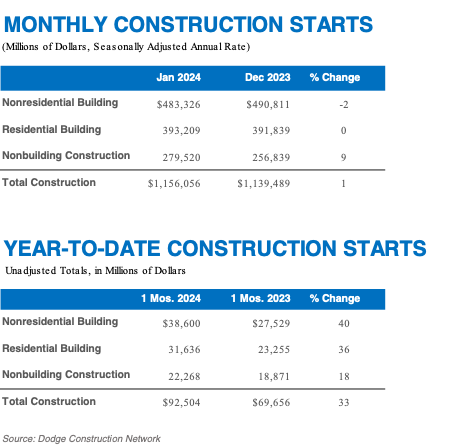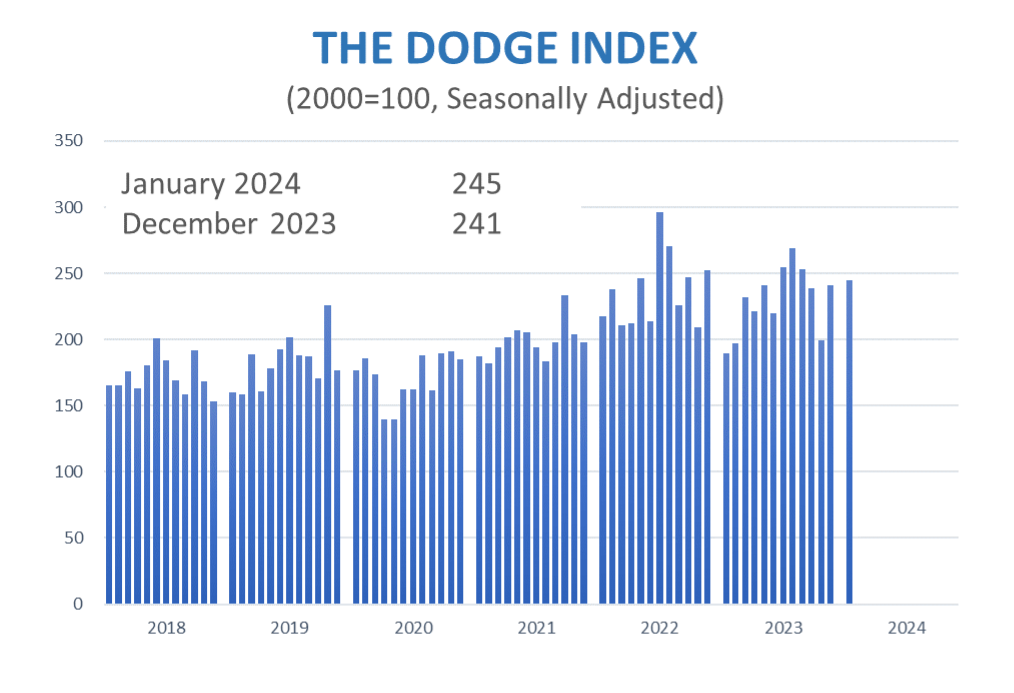New study reveals surging adoption of water and materials conservation and energy efficiency in building practices
BEDFORD, MA, Feb. 27—Today, Dodge Construction Network and the National Association of Home Builders (NAHB) unveiled the latest findings from the Building Sustainably: Green & Resilient Single-Family Homes 2024 SmartMarket Brief. As the latest in a series of studies conducted by Dodge and NAHB, this comprehensive report showcases a remarkable uptick in the adoption of green building products and practices, signaling a dynamic shift toward sustainability among home builders and remodelers.
When asked about their use of 22 specific products and practices, builders and remodelers reported the following average usage increases from 2019 (the last time the survey was conducted) to 2024:
- Water Conservation: Increased nine percentage points
- Materials and Resources Conservation: Rose 12 percentage points
- Energy Efficiency: Surged 17 percentage points
These figures underscore a clear and undeniable trend: Homes continue to improve their sustainable performance, with builders and remodelers across the nation embracing eco-conscious practices.
“It is clear that green building has become a mainstream part of the residential construction landscape with more builders and remodelers engaging in sustainable building practices than ever before,” said NAHB Chairman Alicia Huey, a custom home builder and developer from Birmingham, Ala. “The results also indicate a potential for future growth by driving market demand for green homes, as well as an increased move toward enhancing homes through resiliency practices.”
Despite the uptick in specific green practices, many builders and remodelers do not perceive an overall increase in the construction of green homes. The study revealed marginal growth in 2024 compared to 2019 in the number of respondents who indicated that over half of their home projects were green. The number of new home projects reported increased by just one percentage point and remodeling projects by five percentage points.
“The study strongly indicates that incorporating energy efficiency, as well as water and materials conservation, into their projects is becoming part of the standard practice for builders,” says Donna Laquidara-Carr, industry insights research director at Dodge. “This suggests a likely improvement in the overall performance of housing stock, even if the share of homes flagged as green buildings has not appeared to change significantly.”
Driving Market Demand for Green Homes
The findings also highlight a clear opportunity to boost the adoption of green homes by stimulating market demand. Currently, 82% of builders and remodelers report that home appraisals infrequently or never reflect a home’s green value, while 72% infrequently or never see green features in MLS listings. Without clear visibility into available features or the tangible benefits of green building home value, consumers are less likely to invest in the additional costs associated with sustainable construction.
Greater awareness and accessibility of government and utility incentives could also significantly drive green home construction. While only 16% of builders and remodelers report incentives as a top reason for building green, a substantial 48% express that the presence of such incentives in their area would strongly motivate them to increase their commitment to green building.
Enhancing Home Resilience: Regional Insights
The study also delved into specific products and practices enhancing home resilience against natural hazards, such as wind, floods, fire and earthquakes. Findings underscore significant regional differences, even in areas where hazards such as wind and floods are increasingly prevalent in many parts of the United States. Wind and floods are the most commonly addressed hazards, with 55% of builders and remodelers actively seeking to mitigate impacts of wind and 44% addressing floods. Attention to these hazards is particularly strong in the South, with 64% addressing wind and 52% addressing floods in that region.
Download the Building Sustainably: Green & Resilient Single-Family Homes 2024 SmartMarket Brief to gain full access to the report’s comprehensive insights.
The post Home Builders and Remodelers Embrace Greener Practices, Surpassing 2019 Levels appeared first on Dodge Construction Network.
Source: New feed


